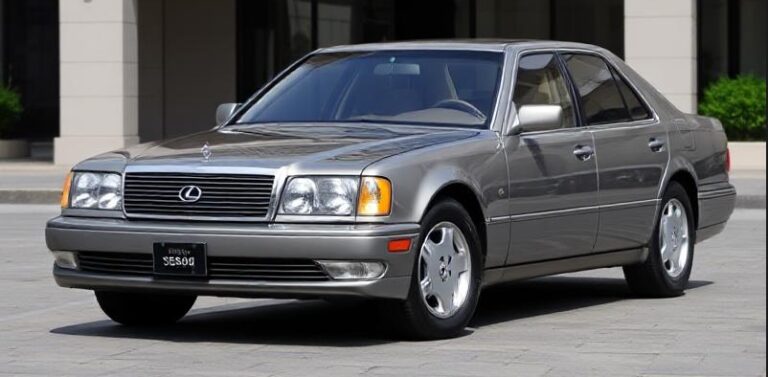The Gentleman’s Scalpel: Charting the Evolution of the McLaren 570GT
In the pantheon of modern supercars, McLaren Automotive carved its reputation with machines of surgical precision and ferocious track capability. From the legendary F1 to the hybrid P1, the Woking-based manufacturer built an identity synonymous with lightweight carbon fibre construction, blistering acceleration, and an uncompromising focus on driver engagement. It was a brand for the racetrack, for the perfect corner on a deserted mountain road. So, when McLaren announced a car designed not just for speed but for comfort, luxury, and cross-continental journeys, the automotive world paid close attention. This car was the McLaren 570GT, a fascinating and pivotal model that subtly evolved during its production run, proving that a McLaren could possess both a warrior’s heart and a diplomat’s poise.
The Genesis: The Sports Series and the 570S Foundation
To understand the 570GT, one must first understand the context of its birth: the McLaren Sports Series. Launched in 2015, the Sports Series was McLaren’s strategic move to broaden its market appeal and compete directly with established players like the Porsche 911 Turbo S and the Audi R8 V10 Plus. It was designed to be the “entry-level” McLaren, a more accessible and usable car than the Super Series (650S, 720S) and Ultimate Series (P1, Senna).
The foundation for this entire family was the MonoCell II, a lightweight and incredibly rigid carbon fibre tub that weighed less than 75 kg. Bolted to this core was McLaren’s ubiquitous M838TE 3.8-litre twin-turbocharged V8 engine, a powerhouse known for its explosive top-end performance.
The first model to emerge from this platform was the McLaren 570S Coupé, unveiled at the 2015 New York International Auto Show. It was the quintessential modern McLaren: aggressive, focused, and fast. Its styling was dominated by function, with signature dihedral doors and “flying buttress” C-pillars that channelled air over the rear deck for aerodynamic stability. The suspension was firm, the steering hyper-alert, and the power delivery relentless. It was, by all accounts, a brilliant junior supercar. This car set the benchmark and provided the essential DNA from which the 570GT would be born.
2016-2017: The Arrival of the Grand Tourer
The McLaren 570GT made its global debut at the Geneva Motor Show in 2016, a year after its S-badged sibling. While it shared the same MonoCell II chassis and the exact same 570 PS (562 bhp) V8 engine, its mission was entirely different. McLaren’s engineers and designers methodically altered key aspects of the car to shift its character from a track-day weapon to a sophisticated Grand Tourer.
The most significant and visually arresting change was the replacement of the 570S’s flying buttresses with a side-opening glass hatch. Hinged on the kerbside (for left-hand or right-hand drive markets, ensuring safe access away from traffic), this elegant piece of tinted glass opened to reveal the “Touring Deck.” This leather-lined storage area, situated above the mid-mounted engine, provided an additional 220 liters of luggage space. Combined with the 150-liter front trunk (‘frunk’), the 570GT offered a total of 370 liters of cargo capacity—more than many family hatchbacks and a remarkable figure for a mid-engined supercar.
This practicality came with a host of other refinements designed for comfort and long-distance travel:
Suspension: The spring rates were softened by 15% at the front and 10% at the rear. This change, while seemingly minor, significantly improved the car’s ride quality over broken pavement and motorway imperfections, making it a far more compliant daily driver.
Steering: The steering ratio was reduced by 2%. This made the electro-hydraulic steering system slightly less immediate and “twitchy” than the 570S’s, lending the car a more relaxed and stable feel at high cruising speeds.
Tires: The 570GT was fitted with specially developed Pirelli P Zero tires featuring the Pirelli Noise Cancelling System (PNCS). This technology uses a sound-absorbing device on the inner circumference of the tire to reduce road noise in the cabin, a crucial feature for a GT car.
Exhaust: A new, slightly quieter stainless-steel exhaust system was fitted as standard to provide a more refined, less intrusive engine note during cruising, though it retained the signature McLaren bark under hard acceleration.
Interior and Roof: A panoramic glass roof was standard fitment, flooding the cabin with light and enhancing the sense of space. The glass featured a Sound & Solar Film (SSF) to absorb solar radiation and provide additional noise insulation. The interior was also more luxuriously appointed from the factory, with extended leather trim and electrically adjustable heated seats.
Despite these changes, the 570GT gave up very little in terms of raw performance. It could still sprint from 0-62 mph (100 km/h) in 3.4 seconds, just two-tenths slower than the 570S, and shared the same 204 mph top speed. It was a McLaren through and through, but one you could genuinely imagine driving from London to Monaco in a single, comfortable stint.
2018: Blurring the Lines – The Sport Pack and MSO Collections
By 2018, the 570GT had successfully established its identity. However, McLaren identified a subset of customers who loved the practicality and elegant profile of the GT but craved the sharper dynamics of the S. In response, McLaren introduced the 570GT with Sport Pack.
This optional package was a significant evolutionary step, effectively allowing buyers to create a hybrid of the two models. The Sport Pack equipped the 570GT with the core dynamic components of the 570S:
The firmer springs and dampers.
The quicker steering rack.
The standard Pirelli P Zero Corsa tires of the 570S.
The S-model calibration for the Electronic Stability Control (ESC).
This created the ultimate “best-of-both-worlds” Sports Series car: the sleek glass hatch and luxurious interior of the GT combined with the razor-sharp handling and track-ready feel of the S. It was a direct response to customer feedback and showcased McLaren’s agility in refining its product lineup.
2018 also saw the launch of a notable limited edition from McLaren Special Operations (MSO): the MSO Black Collection for the 570GT. Limited to just 100 examples worldwide, this model was an exercise in stealthy, sophisticated aesthetics. It featured a unique Carbon Black MSO paint, a Sport Pack as standard, and the MSO Defined Titanium SuperSports Exhaust, which was 5kg lighter and several decibels louder than the standard sport exhaust. The exterior was finished with a Gloss Black Speed Pack and the 5-Twin-Spoke Lightweight Forged Wheels in a Gloss Black Diamond finish. The interior was a matching study in black, with a mix of Jet Black leather and Carbon Black Alcantara, punctuated by MSO branding. It was a trim level that amplified the car’s dual personality—aggressively styled yet elegantly understated.
Beyond these official packages, McLaren Special Operations (MSO) continued to offer near-limitless bespoke customisation for discerning 570GT clients, resulting in many unique one-off creations with special paint finishes, interior materials, and aerodynamic components throughout its production life.
.

.
2019-2020: The Final Years and Legacy
The 570GT continued to be offered through 2019 and into 2020 as the Sports Series began its production wind-down. There were no further major model-year updates or new trim packages during this period; the lineup had been solidified with the standard GT and the Sport Pack option, alongside ongoing MSO customisations. Production of the Sports Series, including the 570GT, officially ceased as McLaren prepared for its next generation of supercars.
The legacy of the McLaren 570GT is profound. It was produced from 2016 until 2020, and in that time, it fundamentally expanded the perception of what a McLaren could be. It was the car that proved the brand could execute luxury and everyday usability without diluting its high-performance DNA. The lessons learned in balancing comfort and dynamics, and the importance of practical features like the innovative glass hatch, were not forgotten.
This evolution found its ultimate expression in the 570GT’s spiritual successor, the McLaren GT, launched in 2019. The new GT was not part of a “series” but a standalone model in McLaren’s lineup, a testament to the success and importance of the GT concept pioneered by the 570GT. The standalone GT took the 570GT’s formula and amplified it: more power, a larger and more practical rear luggage bay, and an even greater emphasis on ride comfort and interior refinement.
In conclusion, the McLaren 570GT was far more than just a softer 570S. It began as a distinct proposition for a new type of McLaren customer and evolved, through the introduction of the Sport Pack and MSO editions, into a uniquely versatile platform. It charted a new course for the brand, demonstrating that the thrill of a mid-engined supercar and the civility of a continental cruiser could coexist harmoniously within the same carbon fiber chassis. It was, and remains, the gentleman’s scalpel—a masterpiece of dual-purpose engineering that carved its own unique and important niche in McLaren’s celebrated history.







